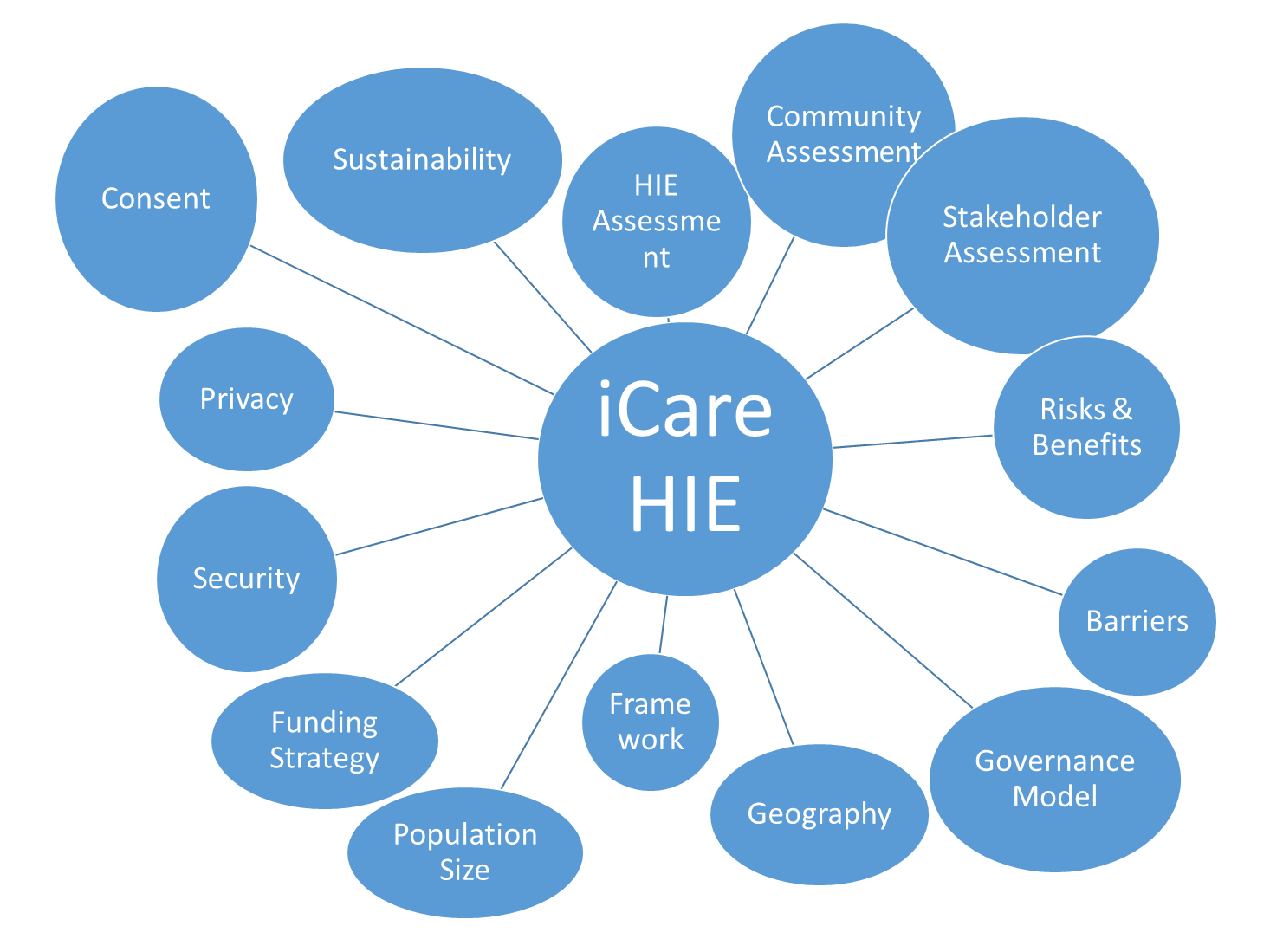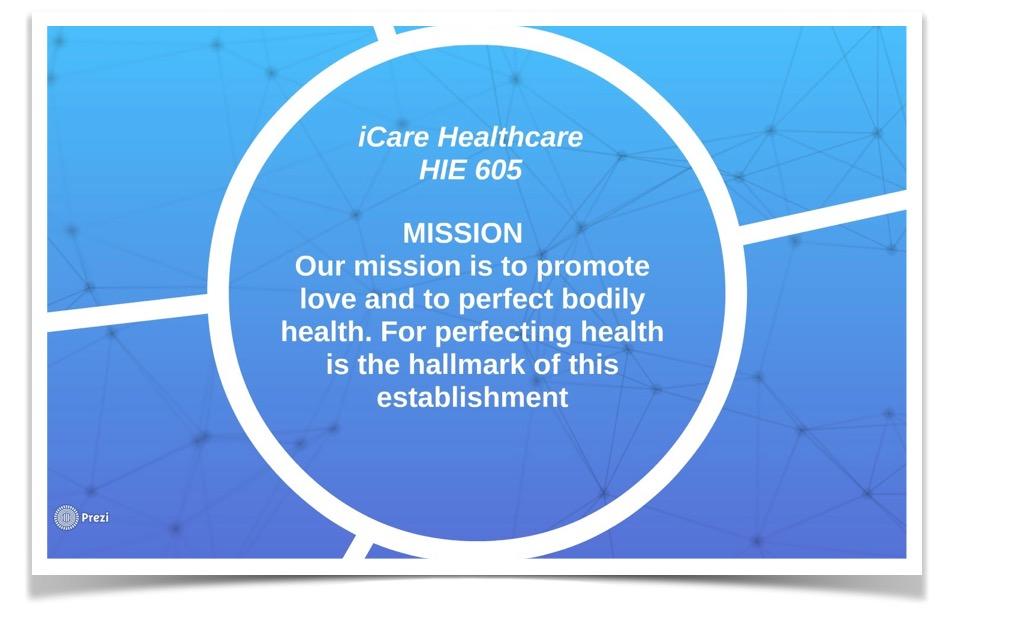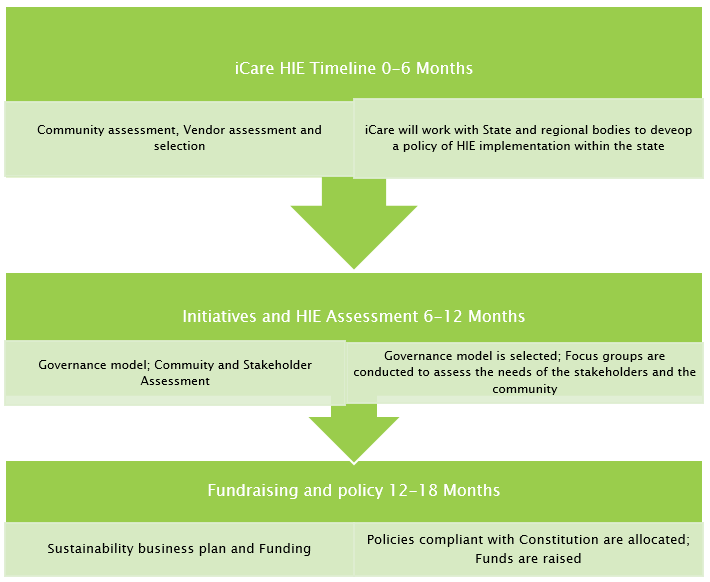Assessing the clinical situation in communities such as African American and Hispanic inevitably requires assessing their cultural situation. Culturally prerequisited Internet usage, for one, can prove a valuable asset in adopting an HIE: for instance, the overall rating of Hispanics using Internet through mobile devices is 10% bigger than that of the non-Hispanics (Lopez, Gonzalez-Barrera, & Patten, 2013). Such results can prove beneficial for companies such as iCare who are currently aimed at shifting their policies towards the Internet of things and adopting an HIE to address vulnerable communities affected by cardiovascular diseases, particularly hypertension.

Vision
Improve the cardiovascular and overall health of Florida’s African-American and Hispanic population with hypertension, and establish better access to online support among the population while at the same time reducing health care prices.
Mission Statement
The mission of iCare is to resolve cardiovascular issues affecting vulnerable African-American and Hispanic patients of Florida through ease-of-access and quality melioration and cost reduction. The premises for information transmission will be framed within the existing standards of such transmission among the electronic health record vendors and healthcare establishments.
Goals and Objectives
The overall goal is to improve coordination and communication of the African American and Hispanic Community affected by cardiovascular diseases and private health systems so as to enhance the quality and efficiency of health care. The data set concerned with African-American and Hispanic community will be small since a considerable part of the community does not have medical records within the state.

The parameters to focus upon are physical activity, fruit and vegetable consumption, alcohol use, and hypertension medication adherence. Such information is possible to obtain from focus group discussions involving key participants such as:
- Physicians;
- Hospital administrators;
- Payer representatives;
- Practice managers, etc.
Vendor products and devices retrieving information from the clients outpatiently are also to be observed.
Specific objectives of this HIE project:
- Governance model development;
- Development of a policy advice model to informally advise State bodies involved in HIE;
- Development of a plan of security and consent assurance within the exchange;
- Devising a technological model of data retrieval and transfer to the State bodies;
- Devising a funding model for initial purchase and long-term sustainability;
- Determination of barriers to HIE implementation and devising possible solutions;
- Development of a clear timeframe for HIE implementation.
The Members of the Governing Board are invited to take part on behalf of cardiovascular care community. We will try to establish regional collaboration between the stakeholders and engage them in achieving our common goal.
HIE Assessment
To understand the type of services the patients want and need, a committee to assess he community requirements will be created. The most optimal way of assessing the prerequisites to establish a local HIE is to retrieve the information directly from the patients. We suggest holding focus groups with various key participants and having a conversation with them; however, some preliminary features of the community in question can be estimated without direct involvement.
Community Assessment
A recent cross-sectional study of the Hispanic population of New York City estimated the risks associated with cardiovascular diseases within the community and the rates of online data reporting:
- The number of individuals compliant to hypertension medicine intake – 825/2680; high adherence rates – 255;
- Levels of fruit/vegetable and alcohol intake – low;
- Only 7.38% (198/2680) of the population reported they searched for health information on the Web (Lee, Boden-Albala, Haomiao, Wilcox, & Bakken, 2015).
Such research might provide a preliminary base for making prognoses in assessing community needs.
Stakeholder Assessment
Among the stakeholders committed to the project one can enlist state and federal Medicaid physicians, hospitals, payers and patients receiving cardiovascular treatment, vendors, etc. The relationships established through focus groups and online services will provide the baseline for initial education and further – on keeping the stakeholders update.
Risks and Benefits of HIE Implementation
Along with the financial benefits that HIE adoption provides, there is also better and faster data transfer among the stakeholders to consider. As a result, the quality of public health is increased and the focus groups receive an opportunity to more effectively address their issues and stay updated. In other words, an HIE is the most efficient way to utilize data consistently, and, in the case of the community of our interest, a way of endorsement of the identification and control of hypertension. Moreover, an HIE is sufficient in terms of providing support to the population health initiatives, analysis of public health, and, ultimately, determination of the overall progress of the community’s health planning (Lopez et al., 2013).
Barriers to HIE Implementation
Among the barriers singled out while using an HIE, one can enlist:
- Sustainability;
- Patient consent;
- Security (Kruse, Regier, & Rheinboldt, 2014).
Sustainability does not happen by itself; to be sustainable, an establishment – any establishment – is supposed to have a well-developed business plan and offer services matching the clients’ demand. Patient consent has to do with data usage and those who have access to it, as per HIPAA act (HIPAA, 2013). Security and privacy are how personal healthcare information is handled, which is interrelated with consent. These barriers will be further addressed.
Governance Structure
Our HIE implementation will be concerned with establishing connection between public and private health systems.
Factors to Consider When Selecting A Governance Model
Any model selected by a state will have advantages and drawbacks. When choosing a model for our Hypertension on African American and Hispanic Community health information exchange framework the following should be considered:
- Geography: providers from diverse regions might be forced to overcome obstacles in a hybrid or decentralized HIE;
- Framework: the level of cooperation determines the management model and patient programs; privacy will be featured by an Opt-in/ Opt-out option;
- Population Size: the determination of the number of providers and the amount of clients within the community of our interest can call for a decentralized model, which would mean a discrepancy of governance modes with respect to geography.
A solution to approach the discrepancy must be devised for the HIE to be flexible.
Funding Strategy
To overcome the barriers, the HIE will need to work with both the State of Florida and the Regional Extension Center to make sure there is a possibility of funding from these, as well as gaining support from the potential customers. Another pathway would be collaborating with Medicare, Medicaid, and FHIN, as well as receiving staff support to raise funds for the hardware.
Security, Privacy, and Consent
iCare understands the criticality of privacy assurance, which is especially relevant as health care shifts from paper to digital storage and processing. Consumers represent important stakeholders in this process because it is their health information that is being digitized and shared electronically (Patel, Beckjord, Moser, Hughes, & Hesse, 2015). iCare HIE systems will be aimed at excelling in HIPAA security rules adherence.
Generally, the HIPAA is an act allowing the information providers transfer patient data on condition that the patients are common to both providers (HIPAA, 2013). At that, the patients should be enabled to access their information and be fully informed about its usage by third parties. iCare respects the patients’ rights for data security and opts for providing them with information in the full.
Sustainability
Without a sustainability business plan, the organization’s future will be quite unproductive – and very short. In developing the HIE sustainability business plan, iCare realizes the necessity to estimate the customers’ values, the scope of their demand, and what they will pay for. The services are to be offered accordingly, including:
- Commitment to the community with hypertension issues, especially African American and Hispanic, women, seniors, and children;
- Prevention and treatment: offering weight and BP management services, education, etc. (Gray, Elliott, & Wale, 2013).
Timeline
The table below represents the implementation of HIE in 2016 and 2017. Testing or demonstration program will provide insight into the benefits of HIT and remote monitoring technology. Also, based on best practices, the demonstration of the benefits of the usage of technology is imperative.

References
Gray, K., Elliott, K., & Wale, J. (2013). A community education initiative to improve using online health information: participation and impact. Informatics for Health & Social Care, 38(3), 171-181.
HIPAA: Health Insurance Portability and Accountability Act. (2013). Web.
Kruse, C. S., Regier, V., & Rheinboldt, K. T. (2014). Barriers Over Time to Full Implementation of Health Information Exchange in the United States. JMIR Medical Informatics, 2(2), e26.
Lee, Y. J., Boden-Albala, B., Haomiao, J., Wilcox, A., & Bakken, S. (2015). The Association Between Online Health Information–Seeking Behaviors and Health Behaviors Among Hispanics in New York City: A Community-Based Cross-Sectional Study. Journal of Medical Internet Research, 17(11), e261.
Lopez, M. H., Gonzalez-Barrera, A., & Patten, E. (2013). Closing the Digital Divide: Latinos and Technology Adoption. Web.
Patel, V., Beckjord, E., Moser, R. P., Hughes, P., & Hesse, B. W. (2015). The Role of Health Care Experience and Consumer Information Efficacy in Shaping Privacy and Security Perceptions of Medical Records: National Consumer Survey Results. JMIR Medical Informatics, 3(2), e14.